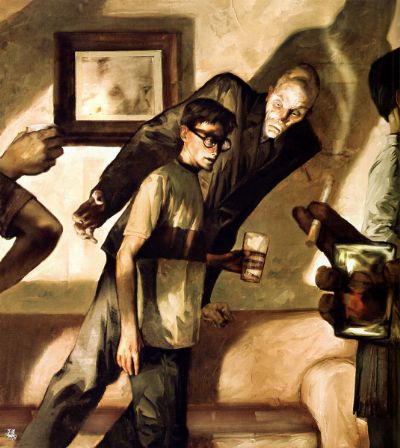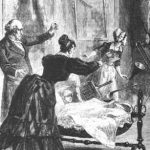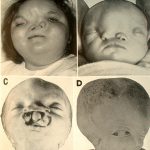Description

A doppelganger, also spelled doppelgaenger, can be the ghost of a living person or any other sort of physical double that look very similar to the ghosts of the deceased. The idea of a doppelganger is sometimes similar to that of an “evil twin.” The word doppelganger comes from the German Doppelgaenger, literally meaning “double-goer.” Doppelgangers are also linked if not similar to crisis apparitions.
There are many different types of doppelganger, as the definition of the term has become somewhat loose, encompassing any sort of double. The doppelganger may be ghostly or appear in the flesh. It may be an “evil twin” unknown to the original person who causes mischief by confusing friends and relatives, or it may be the result of the original person being in two places at once through an act of magic. In some cases a person will come upon his own doppelganger who is typically engaged in some future activity. Scientists at the University Hospital in Geneva, Switzerland discovered that electrical stimulation of the brain, used to treat epilepsy, can produce the sensation of a doppelganger’s presence in the patient.
In folklore, the doppelganger is said to have no shadow or reflection, much like vampires in some traditions. Doppelgangers are often malicious or a bad omen, and they can haunt their earthly counterparts. They may also give bad advice or put thoughts in their victim’s heads. Seeing one’s own doppelganger or the doppelganger of a friend or relative is considered very bad luck, often heralding death or serious illness of the doppelganger’s original.
In fiction
Doppelgangers appear often in various types of fiction, from mistaken identity plots in novels and plays to more supernatural doppelganger phenomena in works of science fiction, fantasy, and horror. There are many famous accounts of doppelgangers in history as well. Guy de Maupassant’s short story Lui (Him) tells of the writer’s own experience with a doppelganger. In Edgar Allan Poe’s short story “William Wilson”, the protagonist of questionable morality is dogged by his doppelgänger most tenaciously when his morals fail. A similar device is employed in Fyodor Dostoyevsky’s short story “The Double: A Petersburg Poem. In Charles Williams’ novel, Descent into Hell, a doppelgänger is a significant part of the plot as the heroine’s fear of the doppelgänger drives relationships and choices. In Stephen King’s book The Dark Half, the main character, Thad Beaumont, thinks he’s being tormented by a murderous doppelgänger. But is revealed later that he’s indeed the ghost of Thad’s twin who had died in his childhood, and acquired an own life when Thad invented a fictional character for the book he was writing.
Famous cases
English poet John Donne claimed to have met his wife’s doppelganger in Paris shortly before his daughter was stillborn. Poet Percy Bysshe Shelley and President Abraham Lincoln both saw doppelgangers that presaged their death; Shelley in a dream and Lincoln in his mirror.
Case example: German ghost hunting investigative team is called upon a doppelganger haunting activity to investigate.
The woman victim was standing on a street corner and with her peripheral vision saw the image of herself on a bus. The image of herself was staring back at her. One week later she again faced her doppelganger in a crowded mall, it stared at her and seemed to disappear amongst the mass of people. It wore the same clothes that she wore. One week later, she was diagnosed with cancer.
Meaning
Doppelganger haunting activity is considered the evil twin, the harbinger of misfortune, the omen of death.
In most cases, the victim of this haunting activity is in danger with her immediate surroundings, her family or in some cases the victim themselves are in grave danger of illness or death.
Theories
According to Shahar Arzy and colleagues of the University Hospital, Geneva, Switzerland the left temporoparietal junction of the brain evokes the sensation of self image—body location, position, posture etc. When the left temporoparietal junction is disturbed, the sensation of self-attribution is broken and may be replaced by the sensation of a foreign presence or copy of oneself displaced nearby. This copy mirrors the real person’s body posture, location and position. Arzy and his colleagues suggest that the phenomenon they created is seen in certain mental illnesses, such as schizophrenia, particularly when accompanied by paranoia, delusions of persecution and of alien control. Nevertheless, the effects reported are highly reminiscent of the doppelgänger phenomenon.








